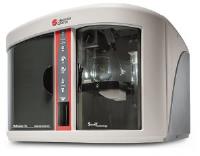 Add My Company
Add My Company
Sign In

There are copious methods of particle assessment for material characterisation, with different samples requiring varying techniques and methodologies to ascertain its viability for use in a consumer or industrial product, or for research purposes. Particle size analysers are subsequently varied, relying on different instrumentation to perform accurate analyses of particle morphology to further determine the biological or physiochemical properties of a material. Particle size analysers are designed to operate to widely varying specifications and dimensions to acquire accurate data about material properties, physical structures, system stabilities, and more. This is achieved by complex instrumental arrays which are capable of probing materials with low invasiveness to allow researchers to accurately determine material characterisation. This article will explore the highly specialised parameters of various particle size analysers for the determination of material characterisation in a broad range of industries:
ShapeSizer
The ShapeSizer is an established static analysis system which measures materials and provides a suite of graphical imaging outputs for research purposes. Using an optical microscope with a varifocal lens and a high-quality 1.3-megapixel camera, this particle size analyser informs material characterisation by non-invasively measuring samples on a standard slide. This setup can determine particle size distribution, including minimum and maximum sizes, as well as particle shape parameters.
FlowCAM PV-Series
The FlowCAM PV-Series is an imaging-based particle analyser with a high degree of portability. It combines rapid acquisition of thousands of particle images with as many as 32 different measurements performed per particle image. It can perform a range of shape and morphological measurements, including both ABD and ESD-based volumetric measurements.
These image-based measurements create accurate pictures capable of quickly highlighting the quantitative metrics of various particles, while accurate automation allows for high throughput material characterisation for a range of applications, including the characterisation of column packing particles such as silica.
nCS1 High Resolution Nanoparticle Size Analyser
The nCS1 can measure individual nanoparticles in a solution to provide quantitative data on particles ranging from 50nm to 2?m. It eschews conventional optical equipment in favour of a technique known as Microfluidic Resistive Pulse Sensing (MRPS), also known as the Coulter Principle, which suspends nanoparticles in microfluidic capsules and forces them through an aperture, wherein they can be electronically detected. This allows for the material characterisation of an array of nanoparticles with no dependency upon its physiochemical properties, including its transparency.
The nCS1 can analyse particle concentration within a range of approximately 106 ? 1012 particles per milliliter. It is immediately available for material characterisation of ingredients for drugs and medicines, with further applications in the field of nanomedicines.
Multisizer 4e
Building upon the Coulter Principle, the Multisizer 4e is capable of measuring changes in cell volume over time, providing ultra-high-resolution analysis of particles as small as 200nm. This is due to the application of a Digital Pulse Processor capable of performing multichannel analysis with previously unparalleled accuracy, with up to 525,000 time-stamped pulses per analysis. This allows for the minute examination of particles suspended in electrolytic fluids, which can aid in materials characterisation and research in various microbiological fields.
LS 13 320 XR Particle Size Analyser
This laser diffraction particle size analyser allows for the examination of particles in both a dry powder module and a universal liquid module. It uses low angle light scattering and Polarisation Intensity Differential Scattering (PIDS) technology to analyse particles in a range of 10 nm ? 3,000 ?m, with full autonomy for laboratory applications. This dynamic piece of equipment streamlines existing research processes while opening new avenues for material characterisation with its intuitive and easy-to-use interface. The LS 13 320 XR is currently used for material characterisation in the automotive industry, the chemical sector, and more.
Material Characterisation from Meritics
Meritics is the UK?s top supplier of material characterisation equipment, providing only the most accurate and innovative instrumentation for a range of sectors. Including all the above instrumentation, we supply a robust range of particle size analysers suitable for application in a range of sectors. If you would like any more information about performing specific material characterisation processes with our products, please do not hesitate to contact us.
For more information on How Do Particle Size Analysers Determine Material Characterisation? talk to Meritics Ltd
Enquire Now
List your company on FindTheNeedle.

